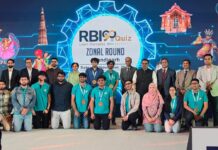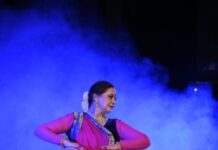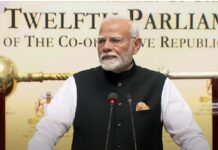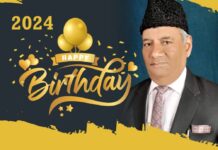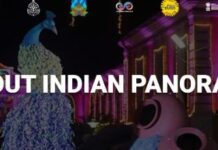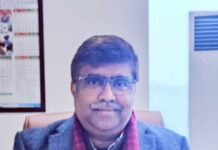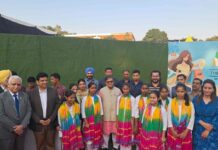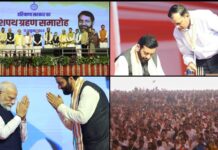The identification of badly damaged and commingled human remains excavated non-scientifically from an abandoned well at Ajnala was the most challenging task for the experts at Panjab University, Chandigarh, when these remains were handed over to them in 2014.With years of strenuous scientific endeavours and the unflinching efforts of Dr. JS Sehrawat, Assistant Professor, Department of Anthropology, Panjab University, Chandigarh, the identified establishment of Ajnala skeletal remains saw a reality as evidenced from his recently published research findings about Ajnala skeletal remains in leading international scientific journals like Forensic Science Review, Journal of Archaeological Science: Reports, Forensic Radiology, Bulletin of International Association of Paleodontology etc.
In these publications, Dr. Sehrawat has claimed that the application of multiple forensic anthropological methods like odontological and radiological examinations, mitochondrial DNA and stable isotope analyses, AMS radiocarbon dating etc., have revealed that the excavated human remains from Ajnala well belong to adult males, who were non-local to the site, ate mixed diets, shared a common geographic area during their childhood and they lived at different locations during last ten years prior to their death. The stable isotopic and mitochondrial DNA results endorsed the written facts mentioned in the historical accounts that the victims of 26th Native Bengal Infantry regiment killed in 1857 at Ajnala came from the states of West Bengal, Bihar, Odisha, Awadh (presently eastern Uttar Pradesh) and parts of Meghalaya and Manipur and other north-eastern and coastal states as potential regions of their geographic identity. The AMS calibrated radiocarbon dates did show high probabilities that the remains belong to the mid-19th Century. The application of Kvaal’s radiological, PTR and AAS dental age estimation methods showed that most Ajnala teeth belonged to adult males between 20-50 years of age. The advanced scientific analyses were conducted in collaboration with California State University, Chico (USA), Newfoundland University, Canada, Atomki Isotoptech, Hungary, Max Planck Institute of Human History, Germany and Birbal Sahni Institute of Palaeosciences, Lucknow and this project is funded by DST-SERB, new Delhi.
We aim to extend our deep respects and tributes to those departed souls through scientific means by establishing their biological identity as to their age, sex, stature, cause and manner of death, time since death, dietary status, mobility history, geographical affinity, traumatic or pathological reconstructions etc., said Dr. Sehrawat.It would be just an unqualified and sweeping conclusion to claim their identity until a sufficient number of bones and teeth along with items of personal identity are examined with multiple scientific techniques to arrive at some valid conclusions about theirbiological identity, he said. More results of different scientific analyses have been obtained and communicated to different scientific journals and we cannot disclose the detailed findings until they are published. The stable isotope analysis of carbon, nitrogen, oxygen, strontium and sulfur with larger samples of teeth and bone samples is underway to provide detailed information about the geographical identity, migration history and dietary patterns of these non-scientifically excavated human skeletal remains.
He informed that there is hope to obtain the list of martyred soldiers available with the British authorities and the known skull of Mr. Alum Bheg (the group leader of 26th Native Bengal Infantry battalion) from Prof. Kim Wagner ofQueen Mary University of London. The list of martyred soldiers has been requested through the British High Commissioner in India and,a professor from Department of War Studies, King’s College London (UK) has also promised to be a part of present research project and help us in getting the list of martyred soldiers of India’s First Freedom struggle against the Britishers. We plan to collect DNA samples and other forensic anthropological information from this skull and then collect biological samples of the descendants of the martyred soldiers from the places from where they belonged to as no changes in DNA composition have been anticipated during last 160 years, said Dr. Sehrawat.It is the unique study in India being conducted at Panjab University, Chandigarh and no other Indian university/institute has such a huge collection of skeletal remains to be studied forensically.
“Our research will provide future directions to be adopted by experts for identification of badly damaged and mixed human remains recovered in forensic or bio-archaeological contexts,” said Dr Sehrawat. “Some had questioned the credibility of the written records and argued that these remains could belong to the victims of Hindu-Muslim partition conflicts of August 1947. But neither the reported manner of death nor their post-1857 burial period could be confirmed from the traumatic lesions on the recovered crania or from the years of make indented on the recovered coins and medals, respectively,” said Dr Sehrawat.



